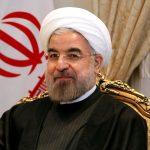Some of us like a tall skinny dark one. Others a hip and innovatively flavoured delight. Some like something short, simple and smooth that is over quickly. No, this is not an article about European sexual preferences. It’s about the elixir which powers European society: coffee.
A coffee menu in 2017 comprises of so many differing styles of hot and cold beverages that it can be very easy to lose track of which drinks are which. Consequently – yes this is a direct consequence, please don’t quibble at the back – at Europe and Me we thought a handy run-down of which coffees most resemble which European nations might come in handy, and possibly cause an argument or two.

This isn’t about which coffee a German or a Spaniard would prefer, no, it’s about lazy stereotypes and a writer’s ability to find tenuous connections between bad national habits and the type of frothy milk spooned ever-so-delicately onto your mid-morning order.
This isn’t about which coffee a German or a Spaniard would prefer, no, it’s about lazy stereotypes and a writer’s ability to find tenuous connections between bad national habits and the type of frothy milk spooned ever-so-delicately onto your mid-morning order.
Historically, the Italians probably lead the way, whilst the French, I imagine, like to think of themselves as connoisseurs. But you shall have to read on to find out if the Italians and the French amongst are readership will be honoured or offended…
We have here attempted to distill crude cultural stereotypes into the ideal coffee shop menu, because we couldn’t think of a good enough reason not to.
A Grande Cappuccino with extra sprinkles: France
The frothiest of coffees is probably most closely reflected in the stereotypical French citizen. Think Fleur Delacour in the Harry Potter novels or one of the nation’s many famously flouncy footballers. There’s a certain finesse, a flourish of foam, but when it gets down to the nitty gritty watch out for a sharp swill of espresso.

The Cortado: Norway
Coffee in a mug? How quaint. Sitting pretty in a debonair glass, the cortado is veritable art, all sharp lines and soft swirled surface. It puts a premium on style, a solid fit for Oslo’s architectural prowess, and our sophisticated, if exacting, Norwegian friends. The taste? Who cares when it looks like that.
The Mocha: UK
Is it a hot chocolate? Is it a coffee? This new-fangled hybrid harbours a serious identity crisis, so of course we took the opportunity to draw scientific and not at all tenuous parallels with the UK’s own somewhat fractured identity.
The Flat white: Sweden
What is it about the Swede’s proclivity for certain prefixes? Flatpack, flat white, flat-out wrong? This barista bevvy is a schooling in off-beat Hipster nonchalance, not so dissimilar to certain scandi citizens. Tip: watch out for the sneaky pre-sip Instagram snap in Perpetua.
the Babycino: Switzerland
If the ideal caffeine composition is a contentious issue, the babycino refuses to take sides. This back-to-basics frothy milk drink forgoes the coffee for a spot on the sidelines. So naturally this ultra-neutral beverage goes to the Swiss, because why spoil a good stereotype with nuance?
THE AMERICANO: GERMANY
The essentialist marriage of ground coffee and hot water. This cafe staple is blunt, unabashed and straight to the point, no trailing list of superfluous toppings here. Frank efficiency a la Germany is key, don’t beat about the barista, get your caffeine fix and damn well get on with it.
The Espresso: Italy

The classic. Short, sharp, and loud. The Espresso is miniature in size yet maximum in flavour. It’s the epitome of that time-worn stereotype of the intense, expressive Italian, abundant with passion and somewhat deficient in patience. (We also wanted to keep the Italians happy, the stereotype of the Italian in sipping an early espresso with the morning newspapers in a no-frills coffee shop is an undeniably sexy one.)
ABOUT THE SERIES
Cheap Shots are lazy, irritating, and don’t stand up to legal scrutiny.










